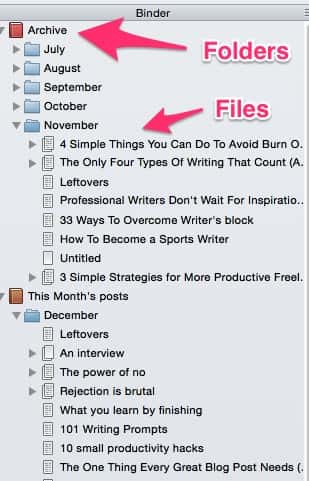 |
| ICE, ICE, baby! |
So I thought I'd see what it's like living with one of those new Internal Combustion Engines for a couple of days.
This isn't a post about the actual car itself (a nice Honda Civic) but more about the actual day to day issues/benefits of living with an ICE car if you're used to an EV.
My intention was to go from my house in Basingstoke to my sister's house in Huddersfield. With an EV this would be no problem - straight up the M3, round the M25 and up the M1 with a couple of charging stops at the services (unless I'm in the Tesla) - and done.
My first problem was range anxiety. I didn't know how far I would be able to travel with the fuel in the Civic. When the car arrived the 'tank' was only half full. According to the manufacturers I could get about 38 MPG on a mixed cycle. The problem is I didn't know how many gallons I had left in the tank. That's right, there's no GOM on the majority of ICE cars so it's a bit hit and miss when it comes to working out how far you can go. How these ICE drivers don't go around in a state of permanent range anxiety is beyond me.
My next problem was when I got in the car to drive off. With our EV's, of course, we start the day fully charged. But with the ICE car only half full I had to head off and find a petrol station to fill up first.
Finding a petrol station wasn't a big problem as there are around 8000 of them dotted all over the country. They're reasonably convenient (although not as convenient as recharging at home, obviously!) But be warned, most of them close at night so if you run out after about 11pm you could find yourself stranded.
However, when I got to the petrol station I hit my first snag: a plethora of fuelling options. Apparently there are different types of fuel you can put into an ICE car and you have to make sure you get the right one. There's diesel, unleaded, premium unleaded and - for certain legacy vehicles there is also something called '4-star'. All very confusing for those of use who like to just grab a plug and start charging. Under no circumstances must you put the wrong fuel in your ICE vehicle or the world will end.
Also different station operators have different names for their fuel. Shell have one name for their top of the range unleaded and Esso have another. There's no indication if these are the same or different and my Civic owners manual was no help. Why can't they just use 'Electricty' like normal people, eh?
However, when I got to the petrol station I hit my first snag: a plethora of fuelling options. Apparently there are different types of fuel you can put into an ICE car and you have to make sure you get the right one. There's diesel, unleaded, premium unleaded and - for certain legacy vehicles there is also something called '4-star'. All very confusing for those of use who like to just grab a plug and start charging. Under no circumstances must you put the wrong fuel in your ICE vehicle or the world will end.
Also different station operators have different names for their fuel. Shell have one name for their top of the range unleaded and Esso have another. There's no indication if these are the same or different and my Civic owners manual was no help. Why can't they just use 'Electricty' like normal people, eh?
My next surprise was the actual fuelling itself. Rather then locking the fuelling connector into the vehicle and walking away I had to stand there and hold the lever to allow the fuel to flow. Very strange. Only when it was finished could I go and find a latté and sandwich. Oh and by the way while some refuelling stations allow card payment at the pump, most of them require you to actually go into a little office at the edge of the forecourt to pay after you have filled up. This can take several minutes if there's a queue.
The biggest surprise by far was the cost. Putting enough unleaded into my Civic to top up cost me around £28. At home this would have been free on my solar panels. But for comparison: for that amount of money I could have run my EV for almost 600 miles off grid electricity. But the £28 was only enough to fill half my tank (approximately 150 miles). Incidentally I checked all 8 pumps in the refuelling station and not a single one was on free vend! This was common across all the refuelling locations I visited.
Driving the car itself was interesting. Obviously there's the noise factor. ICE cars make a lot of it - more so if you're using diesel. But more disappointing was the performance. I put my foot down at the lights and the car engine engaged and started to pull forward as the engine decided to power up. There is a thing called a torque curve with all ICE engines which basically means that the power doesn't come all at once but is fed in gradually. Hardly useful if you're heading into a roundabout in the face of incoming traffic, right?
And don't even think about 1-pedal motoring. It doesn't exist in an ICE car. You have to keep your foot hovering over the brake or you will run into the car in front. I almost rear ended several vehicles at the traffic lights as I kept forgetting the car needs to be told when to stop.
Having sorted out these driving quirks I headed up the M3 and seemed to be making good progress. The charge meter - I mean 'fuel gauge' - stayed pretty much where it was for the first 40 or so miles, which was quite confusing. But then something weird happened. The fuel gauge needle dropped. It went from completely full to just over 3/4 full in about 35 miles. All my range calculations went out the window and I started to get worried. This was compounded by the fact that there was no regenerative braking to feed power back into the engine. It didn't matter how much I stood on the brake I couldn't seem to get the fuel gauge to stop moving down.
Then I hit some traffic on the M25. Found myself stationary for about 15 minutes. In my EV that's not an issue - no battery use, no loss of range. But with this ICE car I could see the fuel gauge moving even though I wasn't. It was almost as if the engine was draining the fuel without actually moving the car forward!
I crawled along to Toddington services. The fuel gauge was showing I had used a little less than a quarter of a tank of fuel. I calculated that I could get as far as Newport Pagnell and top up there. But given the erratic fuel gauge, the lack of regen and the drain while stationary I decided to fill up at Todd. No sense in getting range anxiety and worrying about being stranded on the side of the road, right?
I also needed a pee. So I parked, peed, paused for a second to check out the range of overpriced foods at the M&S, and grabbed a coffee. It was when I got back to my car that I had another realisation about this ICE car. I still had to go around to the fuel station and repeat the process of finding the right nozzle, standing holding the lever as the connector transferred the liquid, then queuing behind the other people waiting to pay before I could be in my way. No plugging in and leaving it while you do other things. There doesn't appear to be the ability to let the car refill itself while you do other things. Seems a bit of a waste of time if you ask me.
As I was putting the nozzle back on the 'pump' I accidentally spilled some unleaded. It went down the side of the Civic, on to the floor and over my hand. What awful smelling stuff it was. I spent a few minutes cleaning up before continuing. Someone from the office had to come out and put sand down on the floor to soak it up. I was disgusted at this but not as disgusted as I was when I found out the price. Apparently the people at the service stations have added a premium to the fuel there because you're a bit of a captive audience. I put in about £12 of fuel but my calculations indicate that at the place I topped up near my house the same volume would have cost me about £10.50. That £1.50 difference would have bought me about 10 KWh of electricity on an Ecotricity charger. Enough for a couple of days regular commuting! Shocking.
I got to Newport Pagnell and the fuel gauge had - again- been erratic and non linear. I had to decide whether to top up or take a chance that I could go further. A rudimentary calculation indicated that I should be able to do at least 300 miles on the current fuel level. This would be more than enough to get me to my final destination. But I had no app to locate fuel stations en route. Was it worth risking it?
Seizing my courage with both hands I decided to risk it. I mean range anxiety is a serious matter and not having a GOM was a bit of a handicap. But I would grasp that nettle and plough on.
But then we hit another snag. At the next service station my wife decided she needed to pee. I pulled in and stopped out front. With my EV I would have plugged in and topped up while she used the facilities. But this wasn't possible. There is a minimum amount of fuel by law that a petrol pump can dispense. As I didn't think I had used the minimum amount between the two service stations I couldn't use the pumps. I had to sit there with fuel pumps in sight and not use them while she peed. Very frustrating!
But then we were on the way. Almost 70 miles of trouble free ICE motoring.
Then..
Ahhh! - More jams. Some sort of accident outside Nottingham. We were in stop/start traffic and the temperature inside the car was climbing. I flicked the air con on and lowered the temperature of the interior. But this had an adverse affect on the fuel consumption. The little meter in the car showed that air con was sapping the fuel and the range. This was exactly what happened with my EV but - because the car lacked a GOM - I had no idea of the range impact. Speaking to other ICE car drivers it appears that this is totally normal and the cold winter weather can sap your range by up to 20%, too. I spent a nervous few minutes monitoring the gauge and doing mental calculations. I figured we should be all right.
Then..
Ahhh! - More jams. Some sort of accident outside Nottingham. We were in stop/start traffic and the temperature inside the car was climbing. I flicked the air con on and lowered the temperature of the interior. But this had an adverse affect on the fuel consumption. The little meter in the car showed that air con was sapping the fuel and the range. This was exactly what happened with my EV but - because the car lacked a GOM - I had no idea of the range impact. Speaking to other ICE car drivers it appears that this is totally normal and the cold winter weather can sap your range by up to 20%, too. I spent a nervous few minutes monitoring the gauge and doing mental calculations. I figured we should be all right.
Leaving the motorway at Jct 35a I headed over the Pennines to drop into the back of Huddersfield. The climb up the hill would - apparently - drain the fuel and sap the range but unlike an EV the drop down the other side wouldn't recharge it even if I freewheeled. Very disappointing and a real design flaw in these ICE vehicles, I think.
I'm pleased to say that I made it to Huddersfield without further mishap. The fuel gauge appeared to be at about 2/3's empty. A quick calculation showed I had about 100 miles left meaning a useful range of 300 miles from a full tank. Apparently various diesel versions of this vehicle can seriously extend this to 500 and 600 miles from a tank. But diesel is even more expensive then 'unleaded' and kicks out some very nasty things at the back end.
Also a reminder that the Civic had to pay a specific fee to the government every year for kicking out noxious exhaust gases ('Vehicle tax'), is not eligible for congestion charge relief and will cost you more every year to service as the complex internal combustion engine has many moving parts that need monitoring, servicing and lubricating.
So in summary I would say the ICE experience is somewhat different to the EV one. Obviously it's still pretty new and it will develop, but it's not there yet. Stick with your EV until they've ironed out the glitches. And start saving for your petrol!
Pros: Quick refuelling turnaround; took about 7 minutes overall.
Cons: Expensive. Smelly. Noisy. No ability to refill at home. Slow acceleration curve. Expensive. No regen. Multiple fuel 'types' cause confusion. No GOM makes range calculation difficult. Did I mention the expense?
(Just in case there's any doubt about this it is, of course, a parody article meant to show that a biased review of a new type of vehicle can very easily be made by selective inclusion and exclusion of facts. Articles of this type about EV's are rife in the traditional media and can be seized upon by anti-EV advocates to show how the technology isn't ready or won't work for some reason. But just by changing the point of view it's very easy to make the same case for ICE vehicles)
(Just in case there's any doubt about this it is, of course, a parody article meant to show that a biased review of a new type of vehicle can very easily be made by selective inclusion and exclusion of facts. Articles of this type about EV's are rife in the traditional media and can be seized upon by anti-EV advocates to show how the technology isn't ready or won't work for some reason. But just by changing the point of view it's very easy to make the same case for ICE vehicles)
Photo Credit: wbaiv Flickr via Compfight cc







 [^cf1]
[^cf1]

